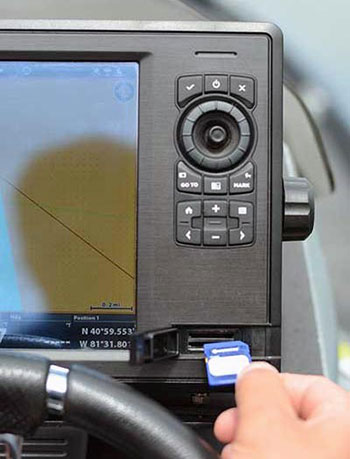Advertisement
Spring is the time for boat maintenance and upgrades, but updating chartplotter software is often overlooked in the rush to get back on the water.

Chartplotter software and electronic charts should be updated at
least once per year.
It's pretty hard to find a boat these days without some form of electronic charting available on a helm display. Older displays were simply chartplotters, because that's all they did — integrate GPS data with an electronic navigational chart to plot a course. That term that is still used by the majority of boaters to describe the more modern and far more versatile multifunction displays (MFD) now common on even the smallest vessels.
MFDs can be installed on a new boat by a dealer or retrofitted to older boats, either by a boatyard technician or the owners themselves. Seen by many as a fit-and-forget item, many owners don't realize the software in these devices needs to be periodically updated. It may actually be outdated right out of the box if the equipment has been sitting on the retailer's shelf for months!
Installing updates on these devices is not like updating your smartphone apps or operating system, which prompts you that an update is available, you push a button, and it's done in seconds. But if you think that updating the software on your MFD and charts is too much trouble, consider that charts are updated frequently through the use of crowdsourcing data contributed by recreational boaters around the country. Navionics, one of the most well-known developer and distributor of navigational charts, makes approximately 2,000 changes and corrections to their charts every day! Obviously, not all these corrections occur in the area in which you boat, but some will be.
To install MFD updates, you will need a computer and a blank memory card (your owner's manual will tell you which are compatible with your MFD. If you do not have the manual, download one from the manufacturer's website. Even if your model is no longer made, the manual is still often online. Irrespective of the manufacturer, the procedure for installing updates is pretty universal, typically follows the sequence outlined below and takes just a few minutes to complete. For specific instructions, always refer to the owner's manual as there may be some differences.
Advertisement
Go to the manufacturer's website and search for support.
- After clicking support, you will often be presented with several options, look for a software updates tab.
- Typically, there will be a dropdown menu of equipment. Scroll down until you find your particular MFD.
- Once you open the page for your particular MFD, you will often see an icon that looks like a computer file.
- Follow the instructions, and download the file to your computer.
- Insert the memory card into your computer (you may need an external card reader), and copy the downloaded file(s) onto the card.
- Once the download is complete, eject the memory card.
- With the MFD powered off, insert the card into the memory card slot. You may have to temporarily remove the card containing cartography if your equipment does not have a spare slot.
- Power on the MFD, and the update should start automatically (Do not turn off the power until the update is complete or you may damage the memory card or MFD).
- Eject the memory card and restart the device.
The procedure for updating charts is very similar except that the updates are downloaded from the chart manufacturer's website.
